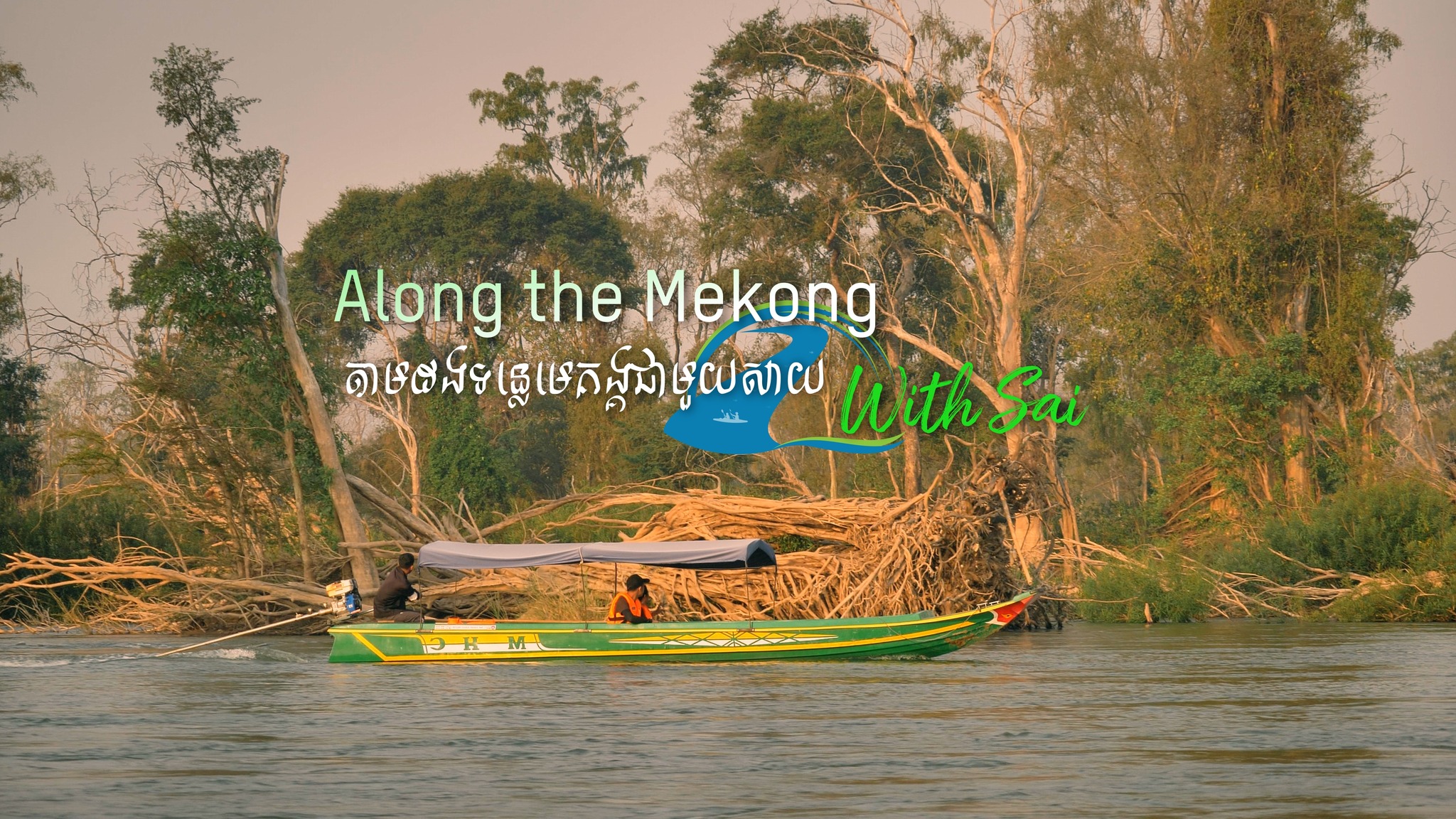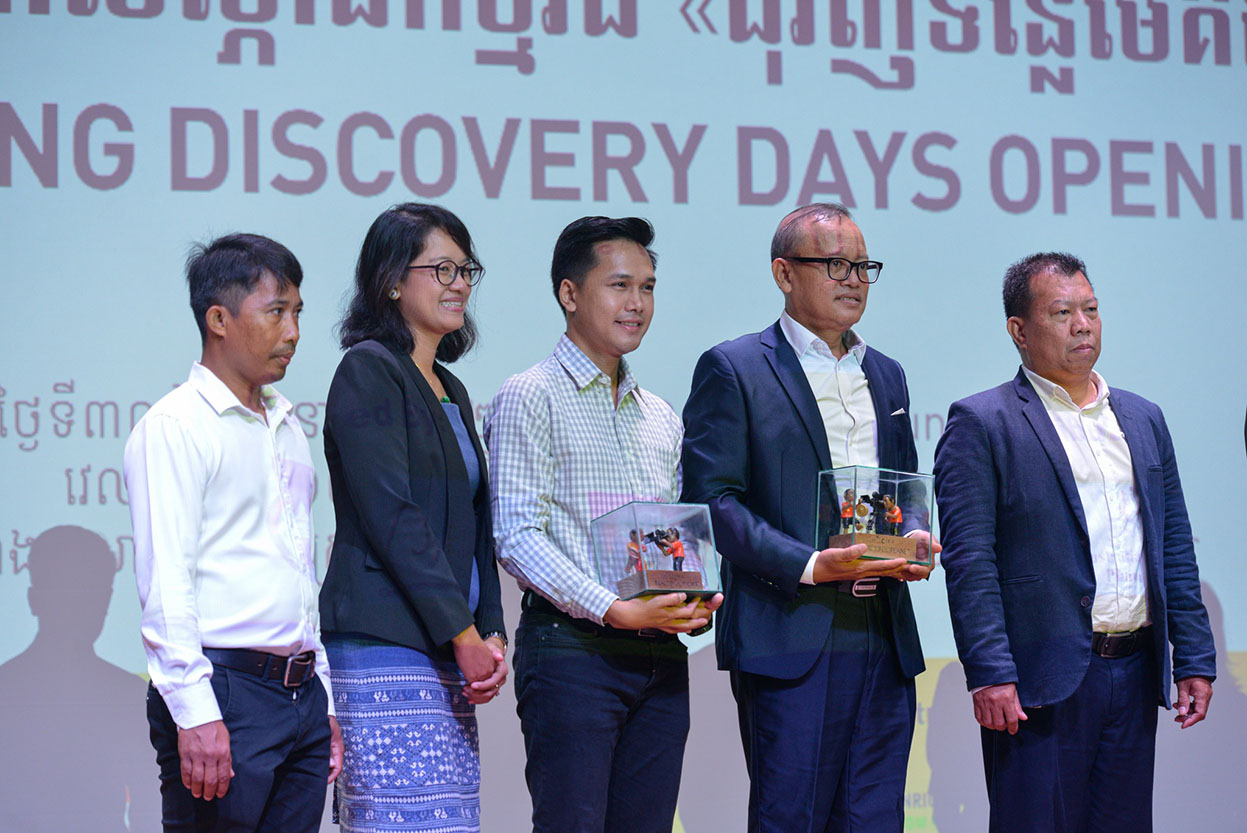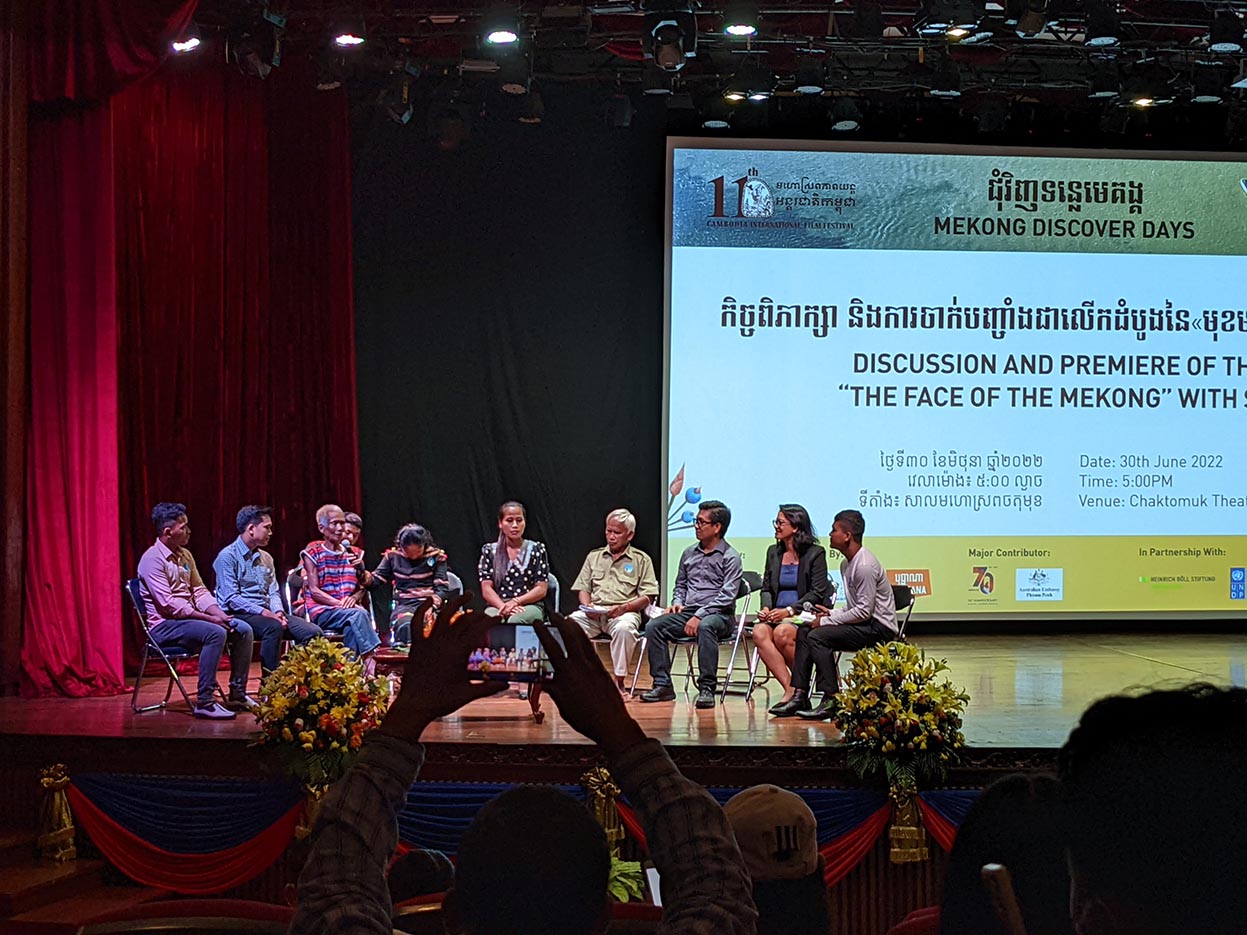This year the Cambodia International Film Festival (CIFF) hosted its Beautiful Planet program once again, dedicated to environmental education and raising awareness about climate change, in the hopes of shifting narratives toward preserving biodiversity and protecting the environment that Cambodia has. It was also the first time that the festival handed out its Beautiful Planet Award for outstanding contribution to environmental education through film.
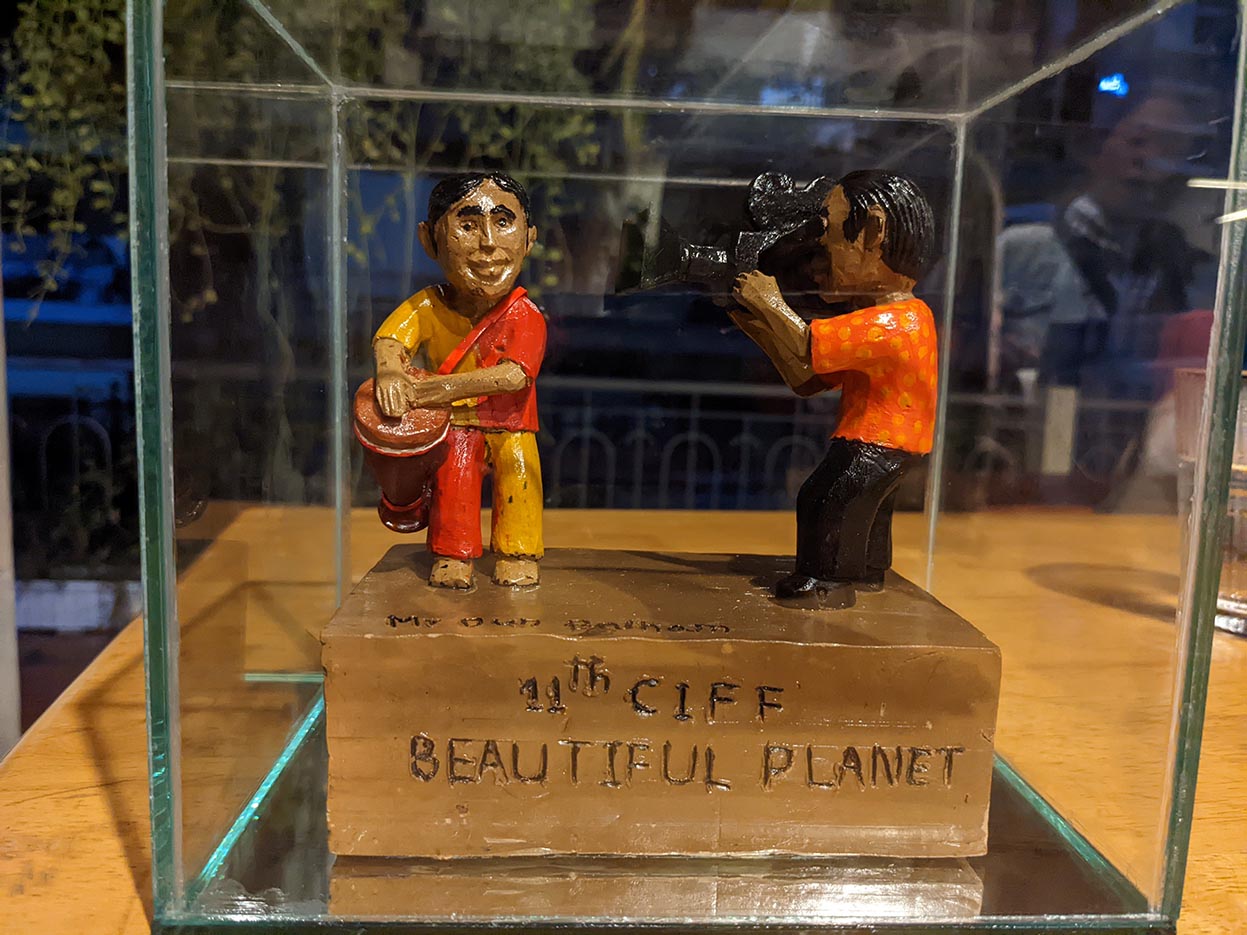

This year’s Beautiful Planet program had a special focus on the “Mekong Region” and screened films under topics such as biodiversity loss, water resources, rainforest, transportation, agriculture, power, water and food management, climate change, pollution, and indigenous populations.
Films such as “Dull Trail,” “Memories,” “Home,” “Walking with Giants,” and “Humans and Elephants” put a spotlight on elephant conservation practices, elephant mistreatment, and the unintended consequences of eco-tourism.
There were international documentaries such as “Moving Upstream: Ganga,” “Voice of Siang,” “Mlabri in the Woods,” “The Traditional Brazilian Family Katu,” “The Last Forest,” and “Children of the Mist,” which explored the daily lives and cultures of different indigenous groups around the world and how they clash with the expectations from the ‘mainstream’ for better or worse.
“Tasty Drops,” “Angeus,” “Traps,” “Sanoung,” “Tro,” “Khlok Maker,” and “My Daily Food” focused on Cambodian indigenous groups known as Tampuan, Brao, and Jarai as there is little known recorded information about these groups and their bond and integration with nature.
“Sea Within a Sea,” “The Last Breath of the Tonle Sap,” and “Staying Afloat” discussed the different changes being seen in Cambodia’s bodies of water, spanning from the impact on the coral reefs at Koh Sdach, to plummeting fish stocks in the Tonle Sap, as well as the impact of the pandemic and dry season on Siem Reap.
“From Wildlife Poacher to Forest Protector” depicted the story of a former Khmer Rouge soldier who used to poach wildlife but then changed his ways to become a forest ranger protecting wildlife for the next generation. In this same vein, “Cambodia Burning” showed the changes in the country’s landscape and how this has impacted people’s lives, as well as the future for the next generation.

“Mekong Downstream” and “Khmer! Khmer!: Cambodia in Conflict” by Australian documentary filmmaker, James Gerrand, gave a raw view of Cambodia in the early 1970s and how the country has changed over the past 50 years.
“Current Sea” is a feature thriller about an investigative journalist and an ocean activist creating a marine conservation area and combating a dangerous, relentless tide of illegal fishing in the sea of Cambodia, inspiring Cambodian environmentalists to create a better life for their people.
“Luang Prabang - Will the Mekong’s World Heritage & Biodiversity Be Damned?,” ”The Bamboo Bridge,” “Madam’s Lien Factory,” “An Unquiet Land,” “Echoes from the Hill,” and “More than a Tree” showed the rapid changes, both positive and negative, and how their impact will shape the face of the next generation.
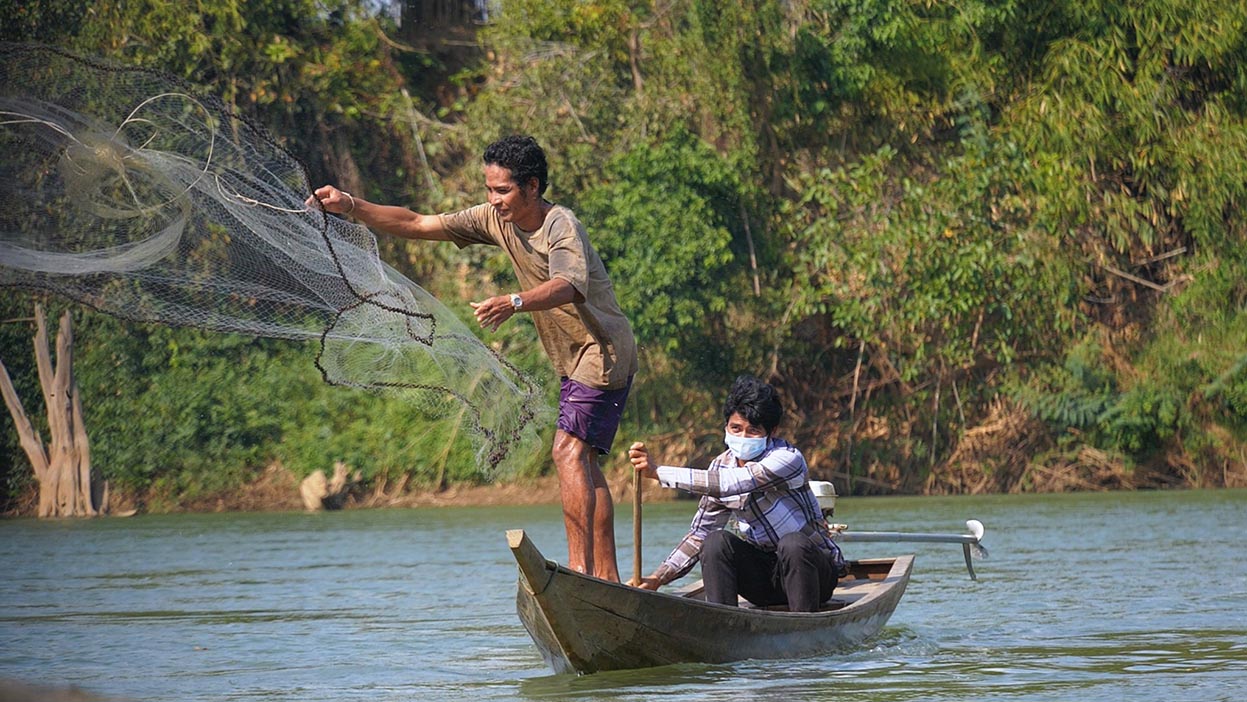
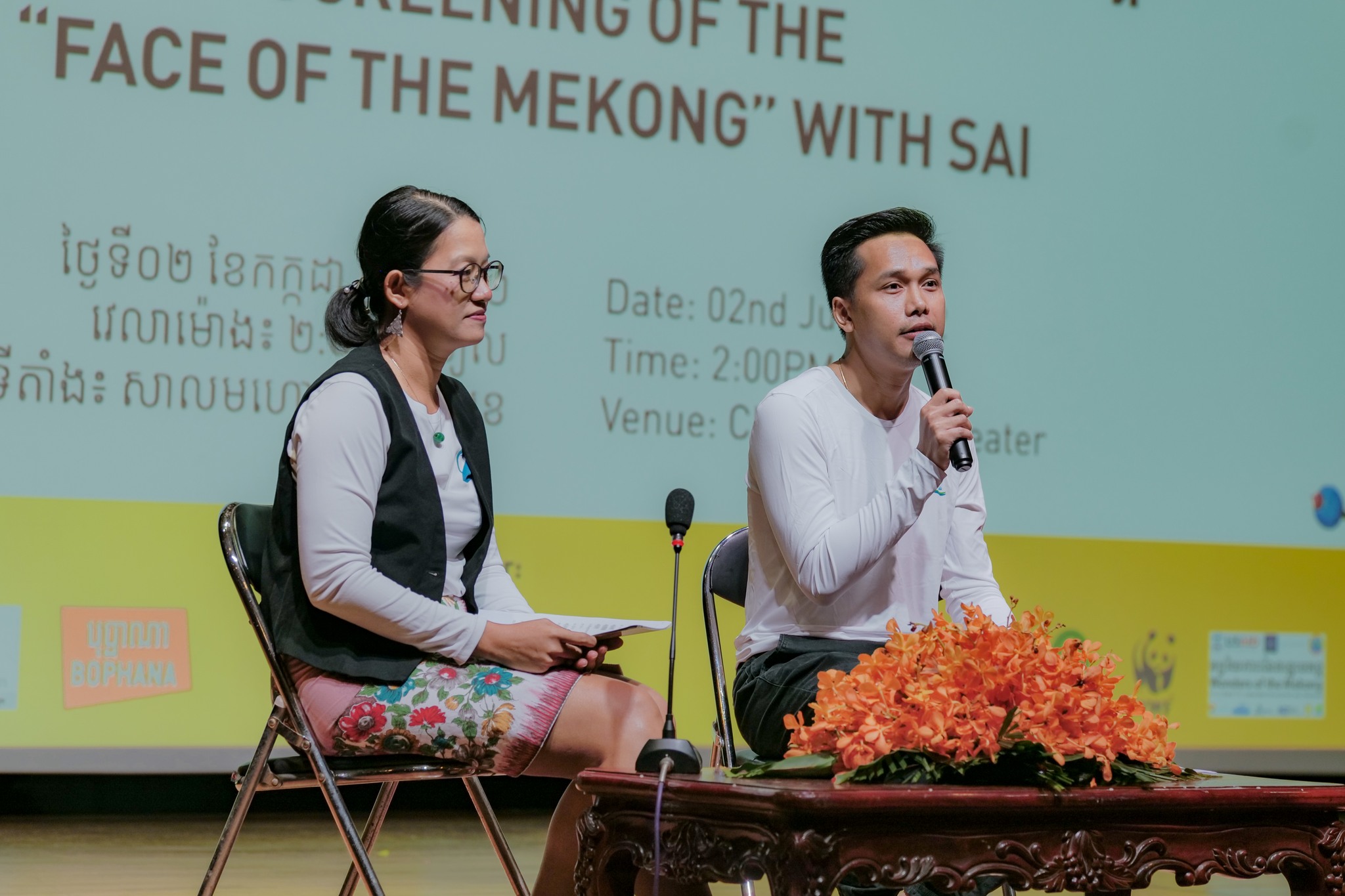
“The Face of Mekong” presented a journey with Cambodian actor, Sai, along the Mekong river from Ratanakiri, Stung Treng, to Kratie province. The film highlights the difficulties diverse indigenous groups face in those areas, and how their livelihoods have been threatened by climate change and the dwindling resources of the river.
After several meetings with Oxfam, Sai said he was interested in this project because he is from Rattanakiri and his mother is from Stung Treng. He wanted to show the wonders of the Mekong river as well. Although Sai was used to visiting different villages, this experience had its own difficulties such as having to carry a lot of equipment through the rainy season, and knowing how to make the locals feel comfortable enough to share their stories.
One of the moments that stood out to him during this journey was when he able to get a good night’s sleep after a long time while camping on one of the islands. On the flip side, he wished that he was able to make a trip before the last dolphin of Stung Treng died, and said he was shocked to see the sorrowful state of Ramsar wetlands.
He said, “We were hoping to meet the last dolphin in Stung Treng province but we weren’t able to make it for its last breath. The dolphin died in February, and we got there in March. And the trees which are the Ramsar [wetlands], and the Romcheng trees that grow in the middle of the lake, when I was younger I saw there were many, but now 70-80% are dying or dead in the lake. So these are some of the things that shocked me as [we filmed].”
Meng Kimlong, Co-Founder of KUDU Studios and one of the producers of the documentary, said that it took them about five or six months to research, film, and write the story. He echoed the hard times of the long travel and unpredictable weather. However, he said he enjoyed the excitement of being able to travel to new places despite having traveled to many places in Cambodia before, and being able to hear many unexpected stories. One of the stories that surprised him the most and stayed with him during this journey was about the elderly who work with nature and conserve it.
He said, “I like their stories, especially those from the elderly, around 60-70 years of age, who told stories about interval farming. Two years they’re on this island, another two years on another island, and after eight years they get back to the first island. They work to gather wood, meaning that they cut down trees to use, but they don’t cut just in one place until there are none left. They cut until they meet their requirement, and after eight years, they return again. So how they gather wood is in intervals, which helps keep our natural resources sustainable. They don’t cut the trees until there’s nothing left.”
He added that the changing water levels have also impacted the quantity of fish and the living conditions of birds. When they started pre-production for the documentary, he said they were able to record birds on perched on the trees, but during the actual production time with Sai, there were no more birds to be found.
Visualizing the Mekong focused on a series of documentaries from first-time young Cambodian filmmakers who studied at the Bophana Center. “Chak Kompong,” “Pillarless House,” “On the Boat, on the River,” and “Diamond in the River” followed the lives, traditions, and culture of the people in the lower Mekong, while “The Heart of Ramsar,” “Green Home,” “Following Dad’s Path,” “The Treasure of Mekong,” and “Whose Shadow” followed the lives of the people living in the upper Mekong region.

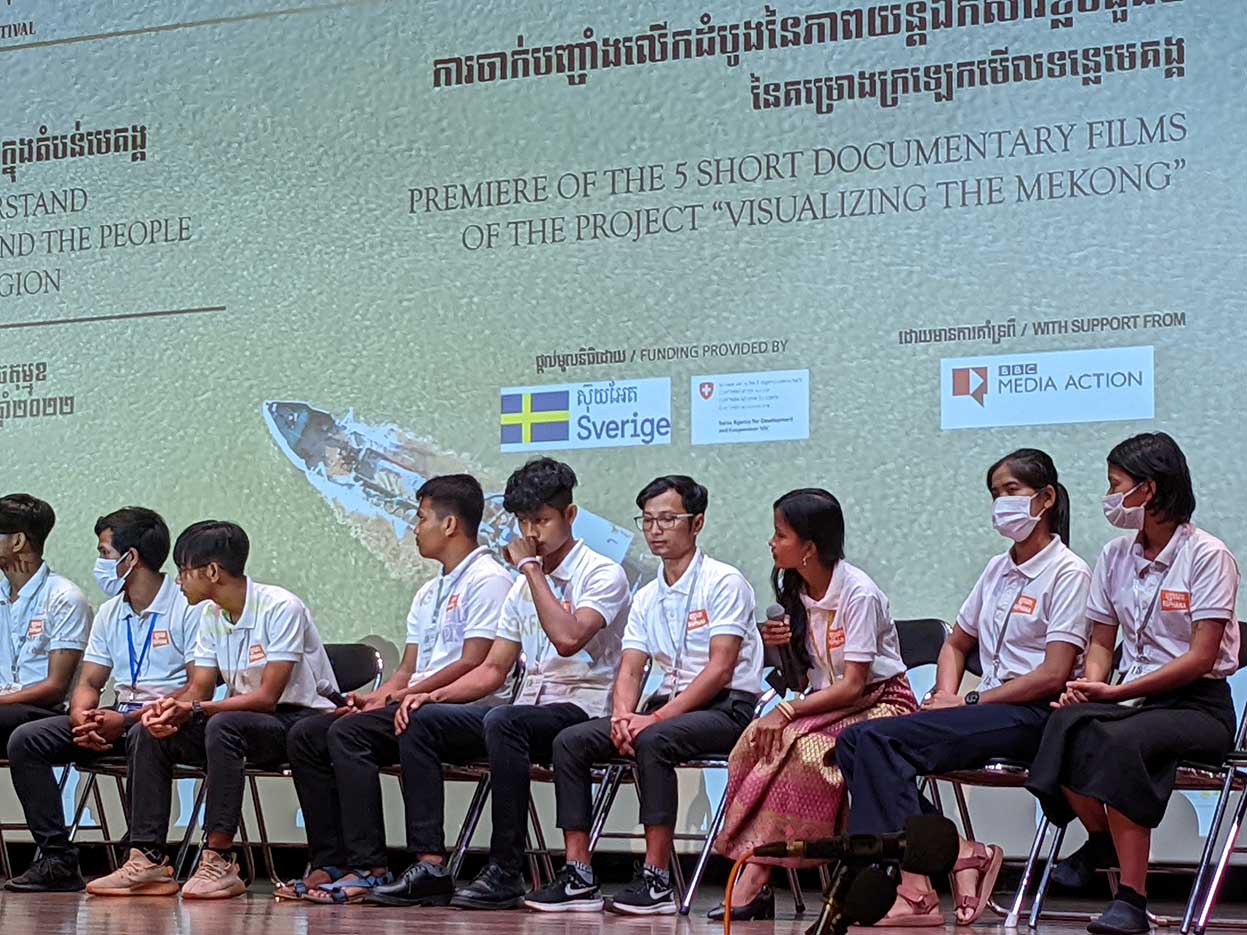
The filmmakers and people featured in the films also echoed facing various predicaments because of the weather. Although the people who live along the Mekong are used to the rain and wind, the filmmakers were not, and in the 40 days they spent researching the topic before filming, they said they felt scared especially when filming on boats. One filmmaker shared that even a pig on the boat was scared because of the weather!
Sai hopes that after seeing these documentaries, the audience will become champions of the Mekong by disseminating the values of the river, spreading information about impactful issues, and working on finding solutions together. He stressed that this was important for everyone to do, even if these problems may not directly impact them as much as the people who are living along the Mekong.
He said, “Even though we do not directly receive the benefits of the [Mekong], the clean water that we use daily is pulled from the lake. If something happens to the lake, it will also affect our clean water. More importantly, it is the source of fish. If we are not helping with the conservation, everything goes up, fish prices will go up; therefore, our expenses will also be greater. So, I hope our documentary will provide information and general education so that the public know more clearly about the importance of the [Mekong] and help to preserve the river together.”
Overall, there were many who joined the screenings, most of whom were students who came to see the local documentaries. Although we may increasingly see natural resources get misused and abused, it seems there is hope yet in our younger generations who are working towards protecting our beautiful planet.
